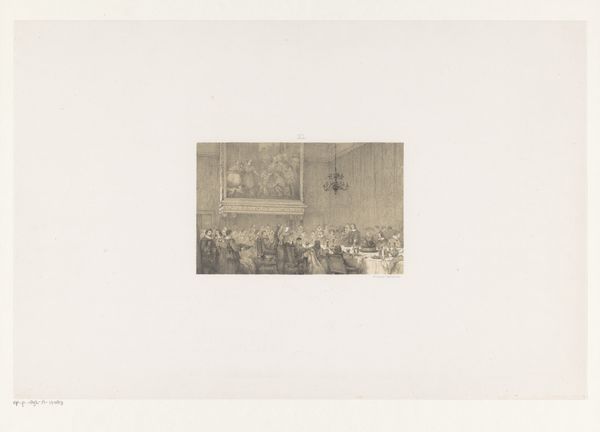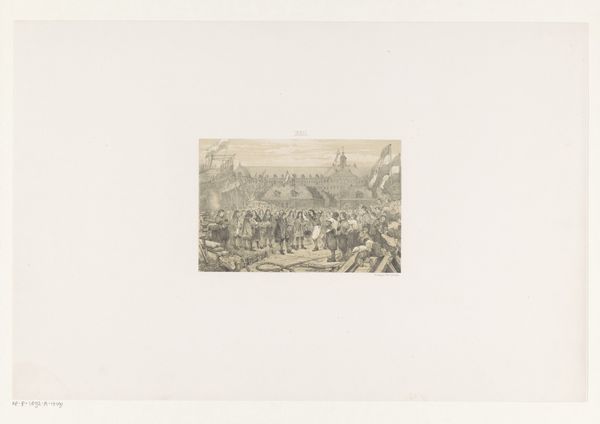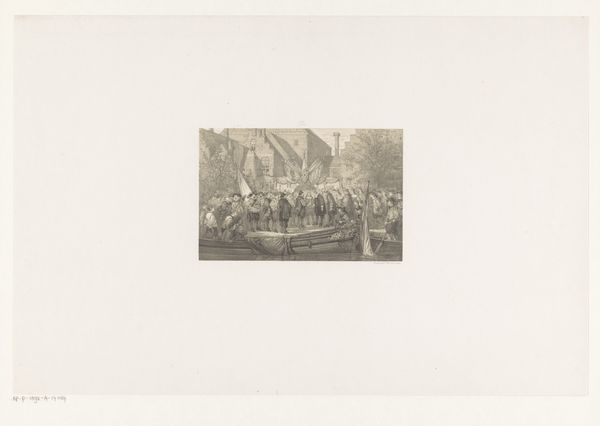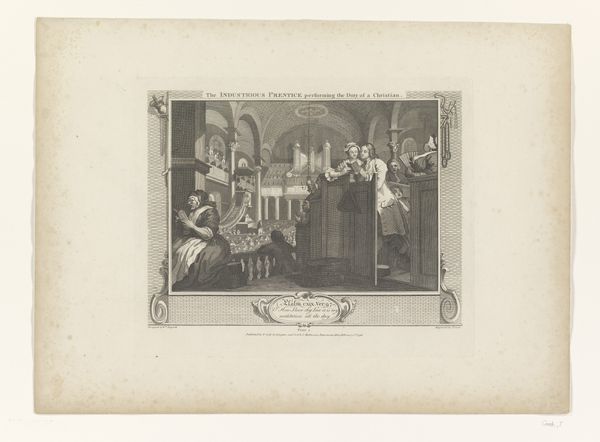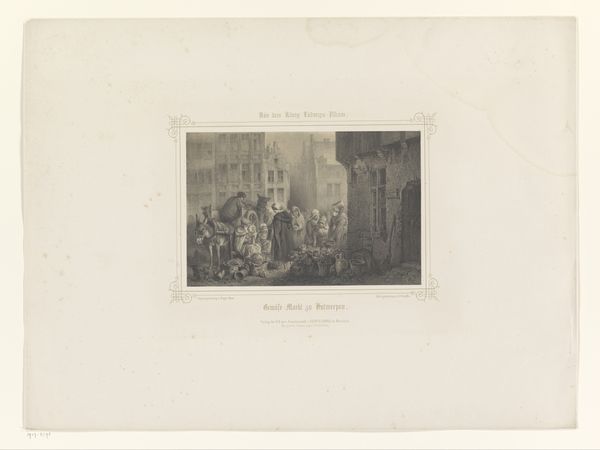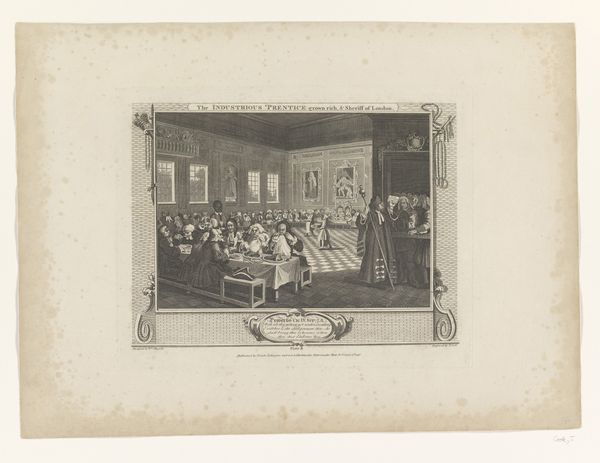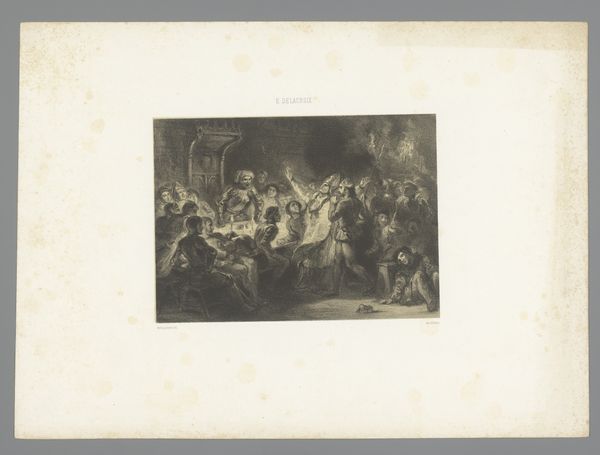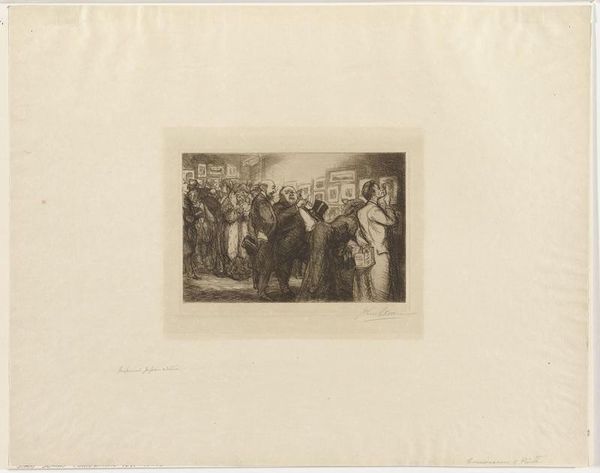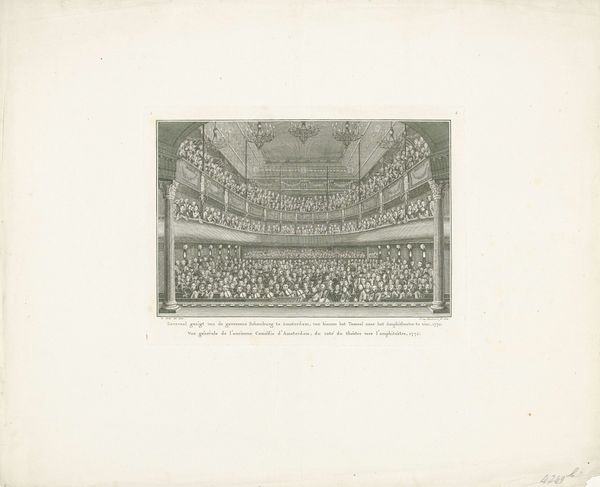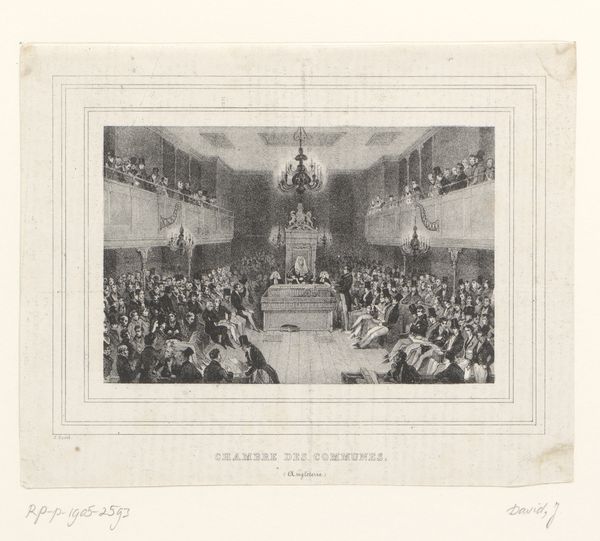
Dimensions: height 353 mm, width 535 mm
Copyright: Rijks Museum: Open Domain
Editor: This engraving from 1876 by Johan Conrad Greive is titled *Eerste vertoning van Gijsbrecht van Amstel,* or "First Performance of Gijsbrecht van Amstel." It shows a theater filled with people. I'm struck by the way the artist used perspective to create such depth. What kind of social or cultural story do you think this piece is trying to tell? Curator: That's a keen observation about perspective! This print depicts a historical event, yes, but also signals something crucial about the construction of national identity through art and performance in 19th-century Netherlands. Consider the play, "Gijsbrecht van Amstel," by Joost van den Vondel. Its subject is the medieval history of Amsterdam, its destruction and rebuilding. Editor: So, it’s a historical drama celebrating Amsterdam? Curator: Precisely. Now think about why depict *this* moment? The “first performance.” Greive isn't simply recording a theatrical event. He’s visually emphasizing the cultural elite *watching* the performance, legitimizing their presence, their cultural values, as essential to the narrative of Dutch identity. Note the architecture – how does it amplify this message of order and importance? Editor: It's almost as if the audience is part of the spectacle. They're carefully positioned within these boxes, neatly arranged...it's less about the play, and more about *who* is seeing the play? Curator: Exactly. The print underscores the cultural power dynamics inherent in experiencing and consuming national narratives. Greive's work reveals the role of art in solidifying specific social hierarchies through shared cultural experiences, right? What do you think of how that helps understand museums' own power and social roles? Editor: Wow, I never thought of it that way. It really makes you question who gets to define "our" history and how museums play into that narrative. Thanks for helping me understand this on a deeper level! Curator: Of course! Looking at art through the lens of power and social context opens up whole new layers of meaning.
Comments
No comments
Be the first to comment and join the conversation on the ultimate creative platform.
